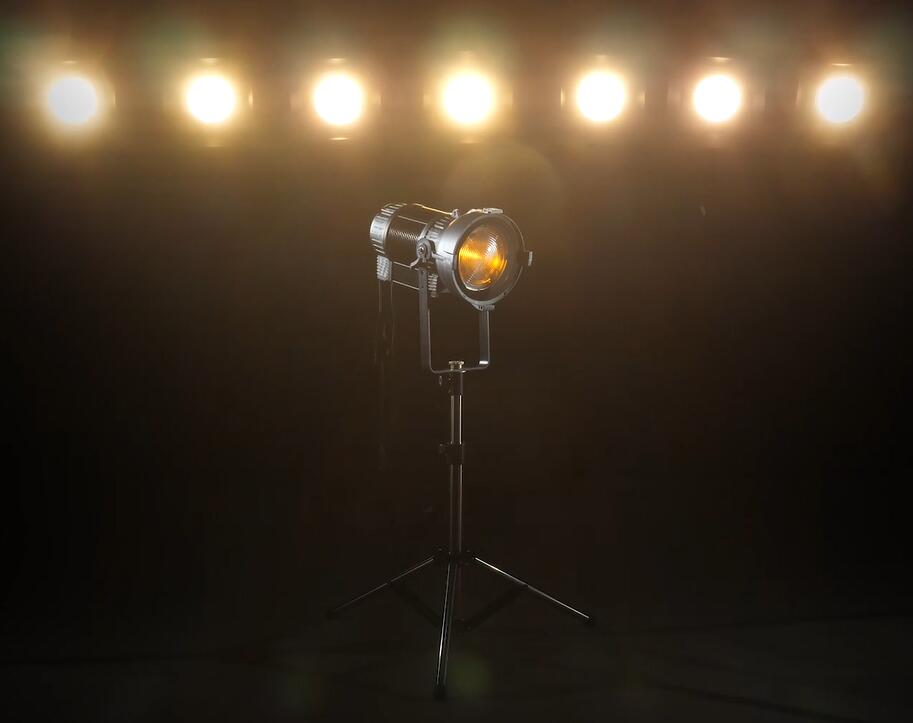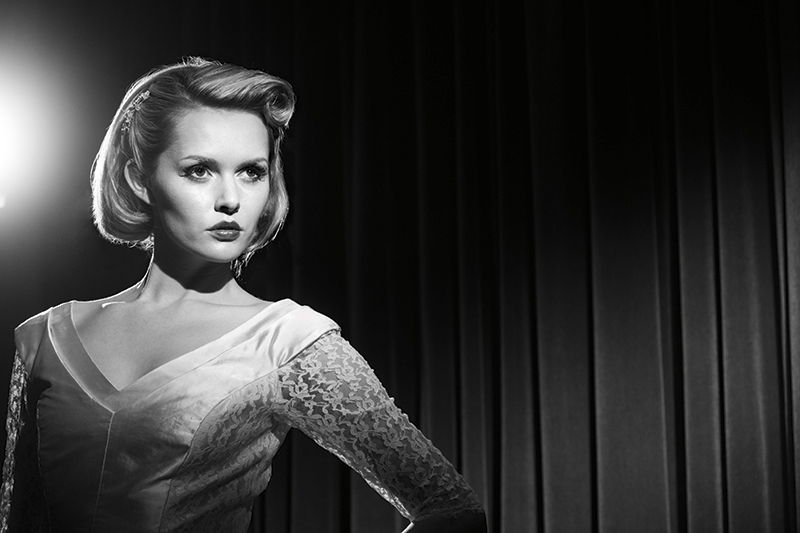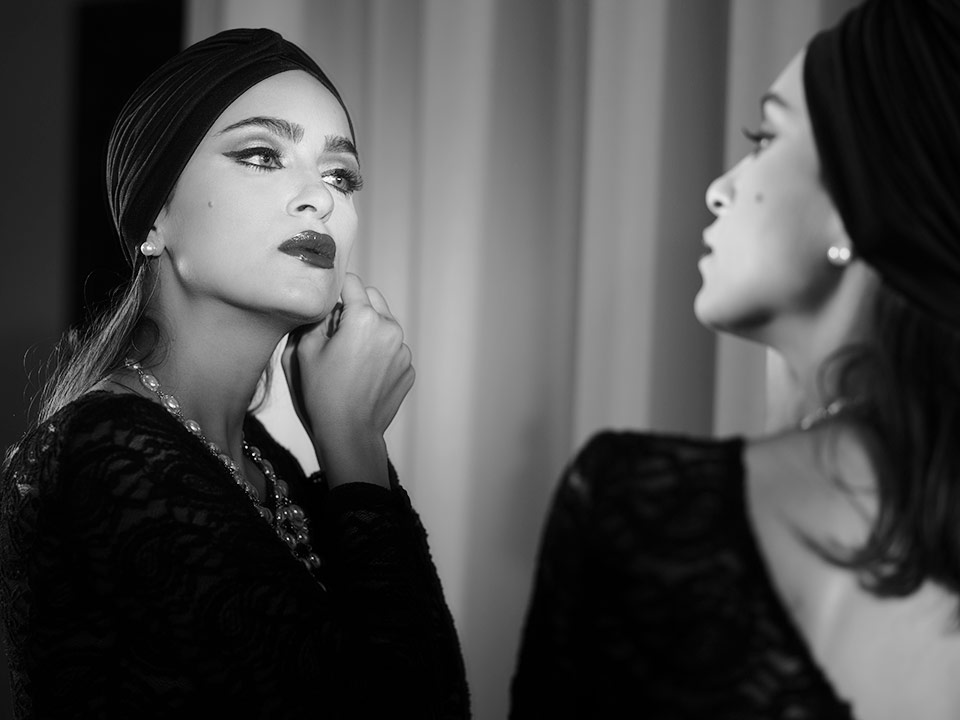What is 'hot light' in photography?
Hot light photography refers to any type of lighting used in a photographic subject. It is also known as 'strobe light' or 'flash photography'. The term hot light photography does not necessarily mean that the photograph was taken using an actual flashlight. There are multiple types and styles of hot lights, and each has its own list of specific advantages and disadvantages.
What is Fresnel lens?
The artificial creation of the sun's visible spectrum, through the use of a powerful arc lamp, could be referred to as "fresnel light." Named after Augustin-Jean Fresnel (1788 – 1827), who invented it around 1822, this type of lighting became widely used during the 19th century for theatrical performances and then later on, in the early days of cinema.
The Fresnel lens is a large convex lens, typically made of glass, which is used to collect and concentrate light. It was first developed by French physicist Augustin-Jean Fresnel for lighthouses. The advantage of using a fresnel lens is that it can be much larger and thinner than a conventional lens, making it easier to transport and install.
What does Fresnel light mean?
Fresnel light is a type of light that is produced by a Fresnel lens. A Fresnel lens is a thin, flat lens that is made of plastic or glass.
Fresnel lenses are made of many small lenses called facets. These facets help to redirect the light and create a sharper image. Fresnel lenses are often used to increase the brightness of lights. This is because they can collect more light than traditional lenses.
By using many small lenses, Fresnel lenses can spread the light out over a larger area. This makes them ideal for increasing the brightness of lights without causing too much glare. Fresnel lenses are used in many applications, including lighthouses, projectors, and optical telescopes. They are also used in traffic lights and car headlamps.
What is a first order Fresnel lens?

Fresnel lens has different sizes and shapes. But the most common one is first order Fresnel lens which has a thickness of about 1/8 of its diameter. The curvature of the lens is also greater on the sides than in the middle. This type of lens is often used in lighthouses to focus the light into a beam.
A second order Fresnel lens is a type of Fresnel lens that has a thicker central section than first order lenses. It is often used in projectors and headlights to create a sharper image.
Fixtures - what is it?
Fixtures refer to the equipment that you need for hot light photography. This includes camera and studio support equipment, as well as the actual flash units. Fresnel lighting fixtures are lights, such as projectors and traffic signals, which use Fresnel lenses to emit bright beams of light.
Fresnel fixtures work primarily by containing a large number of small lenses or reflectors in an array. When electricity flows through the fixture, it illuminates all the individual elements at once and they redirect and focus the light into a sharp beam.
What are some common applications for fresnel lenses?
Lighthouses use Fresnel lenses to create a bright light that can be seen from far away. Projectors use Fresnel lenses to create a sharp image on a screen. Optical telescopes use Fresnel lenses to collect more light and create a clearer image. Traffic lights and car headlamps use Fresnel lenses to create a brighter light.
What are some common problems with fresnel lenses?
One common problem with Fresnel lenses is that they can cause glare if they are used in a way that is not intended. For example, the light from a traffic light might cause glare for drivers if it is shined directly into their eyes.
What are the benefits of using fresnel light?
The benefits of using fresnel light include:
- They are more efficient than traditional lenses because less material is used to make them.
- They are lighter in weight than traditional lenses.
- They can be produced in a variety of shapes and sizes.
- They are less expensive to produce than traditional lenses.
- They can be used in a wide range of applications.
What is Fresnel reflection?

Reflection of a fensel light source or subject can be defined as what we see when we look at it. The reflections we see off of different objects vary depending on what they are made of and how smooth their surface is. The more reflective something is, like water or glass, the stronger and clearer its reflections will be.
On the other hand, non-reflective things such as wood, paper, or fabric cause much weaker and softer reflections. There are many factors that affect reflectivity including material composition; surface finish; angle of incident light; and distance from the reflecting object.
One factor which can affect the reflectivity of a surface is the presence of a Fresnel lens. When light hits a Fresnel lens, it is reflected off of all of the small lenses or reflectors in the array. This creates a much stronger and clearer reflection than if the light hits a smooth surface. This effect is most noticeable when there is a lot of light shining on the lens from many different angles.
Fresnel reflection is the term given to the phenomenon that occurs when light reflects off of a Fresnel lens.
Fresnel light classification
Fresnel Spot
This is the most common type of fresnel light. It is used to create a bright, concentrated spot of light.
Fresnel Flood
This type of Fresnel light is used to create a wide, evenly distributed light.
Fresnel Beam
This type of Fresnel light is used to create a narrow, focused beam of light. It is often used in searchlights and headlights.
Fresnel Linear
This type of Fresnel light is used to create a long line of evenly-distributed light. It is often used as a roadway lighting system.
Fresnel Oval
This type of Fresnel light is used to create a wide oval beam. It is commonly used in floodlights and stage lighting applications.
Fresnel Reflector
This type of fresnel light has a curved reflector behind the lens to provide superior brightness and optical efficiency. This type of Fresnel light is commonly found in flashlights, spotlights, traffic lights, and car headlights.
LED Fresnel light
Fresnel lights are thought to be too big, too hot, and too expensive for LED use. But this is no longer true thanks to the development of Fresnel lens integrated into powerful LEDs.
It was not very popular before but recently LED emission has grown rapidly and it is used for many applications where lightweight, high efficiency, long lifetime are the requirements. Fresnel lens is probably one of them. But there are also some snags in using this product. If you want to get more information about it, keep reading our post!
Fluorescent, LED, or Fresnel?

Which type of light should you choose for your next lighting project - fluorescent, LED, or fresnel? In order to make the best decision, it's important to understand the pros and cons of each type of light.
Fluorescent lights are widely used in commercial and residential settings. They are affordable, long-lasting, and provide bright light, but the bulbs burn out quickly and they emit a lot of heat. Because of their length, fluorescent tubes are not ideal for photographing close-ups or portraits. However, they can be bulky and produce a lot of heat.
LED lights are becoming increasingly popular due to their energy efficiency and long life span. They are available in a variety of colors and sizes and can be used for a variety of applications. However, they can be expensive compared to other types of lights.
Fresnel lights are smaller and lighter than traditional spotlights. They create a more intense light than traditional lights and are commonly used in stage lighting, which is necessary if you plan on shooting with wide aperture settings (high f/stop numbers).
A high f/stop number will decrease the depth of field (blurry background), making it difficult to differentiate between the subject and the background. If you're looking for an affordable and lightweight light that will produce a bright, focused light, a Fresnel spotlight is the best option. However, they can be expensive to purchase and difficult to install.
How to make your own studio with Fresnel light?
Fresnel light is great for studio flashes and bright lighting. Fresnel lights also have a long life span, which means that they do not burn out as fast as other types of light bulbs. You can even order your own fresnel diode if you want to save money on building the light yourself.
Some things to keep in mind when using fresnel lights:
- Be sure to use a diffuser if you are not wanting concentrated light.
- Do not look directly into the light, as this can cause eye damage.
- Be careful when handling the light, as it can get very hot.
- Use caution when turning on or off the light, as it may take some time for it to heat up or cool down.
Final thoughts
If you're looking for an affordable and lightweight light that will produce a bright, focused light, a Fresnel spotlight is the best option. However, they can be expensive to purchase and difficult to install.
Fresnel lights are a great option for studio photography and other lighting applications. They are smaller and lighter than traditional spotlights and provide a more intense light than other types of lights. Be sure to use caution when handling the light, as it can get very hot. And, remember to use a diffuser if you're not wanting concentrated light. Thanks for reading!